Mitarashi dango is a traditional Japanese sweet made of glutinous rice dumplings coated with a sweet soy glaze. Its distinctive flavor and texture have continued to captivate the taste buds of Japanese people, both in the past and present.
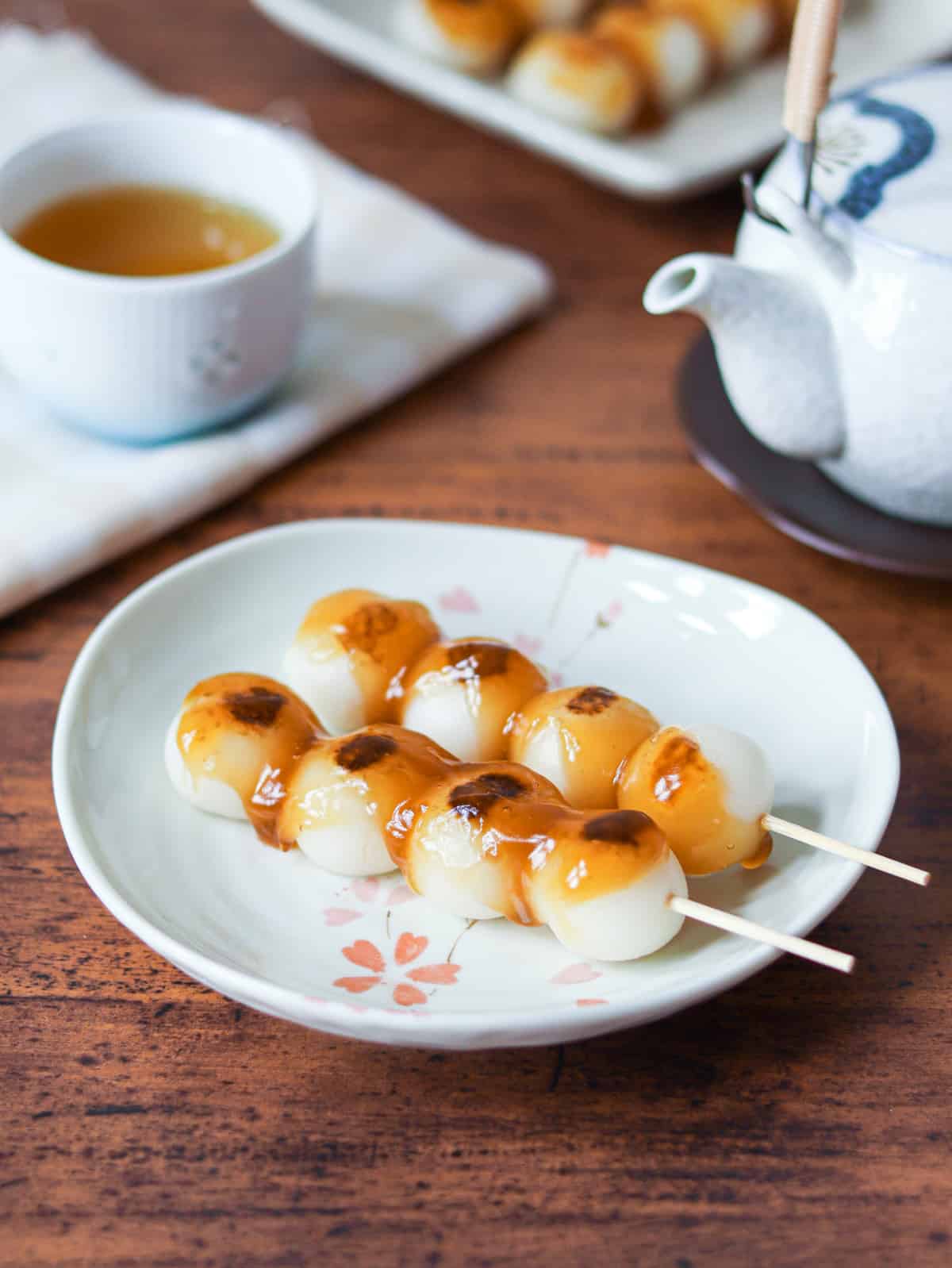
Jump to:
What is Mitarashi Dango?
Mitarashi Dango is a traditional Japanese sweet made of small spherical glutinous rice dumplings that are grilled and coated with a sweet soy glaze. "Mitarashi" means a sweet soy glaze, and "Dango" refers to rice dumplings. The sweet soy glaze used in this treat is created by heating sugar and soy sauce, giving it an addictive flavor not found in dishes from other countries.
It has a very long history, dating back to the late 13th to 14th centuries in Japan. It is such a traditional sweet that has been cherished from ancient times to the present.
Origin and transition
Mitarashi dango is said to have originated as an offering to the gods during the Mitarashi Festival at Shimogamo Shrine in Kyoto. Originally, there were 10 skewers arranged in a fan shape, each with one small dango on the end of the bamboo skewer, followed by four in a row with small gaps between them. However, by the 14th to 16th centuries, dango arranged on just one skewer already existed for ease of eating, and in the 17th century, it became common to have five dango on a skewer.
In the early 20th century, the flavor also changed. Until then, they were simply coated with soy sauce and grilled. However, the owner of "Kamo Mitarashi Chaya," a sweet shop still located in front of Shimogamo Shrine, came up with the idea of combining soy sauce with brown sugar and thickening the glaze with kudzu starch.
The flavored mitarashi dango became so popular that the term "Mitarashi Dango" now refers to these dango flavored with a sweet soy glaze consisting of sugar and soy sauce. Similarly, it has become common to serve 3-4 dumplings on one skewer for easy consumption.
Types of rice flour used
Mitarashi dango can be prepared using joshinko, shiratamako, mochiko, or dangoko. While all of these are types of rice flour, there are some differences among them as follows:
Joshinko (上新粉): Rice flour made from dried and powdered non-glutinous rice. When used to make dango, it yields less sticky and has a crumbly texture.
Shiratamako (白玉粉): Rice flour made from glutinous rice soaked in water, dried, and powdered. When used to make dango, it develops a smooth, soft, and stretchy texture. The dango doesn't harden as quickly over time.
Mochiko (もち粉): Rice flour made from glutinous rice dried and powdered without using water. When used to make dango, it becomes elastic and glutinous. The dango becomes harder when cooled.
Dangoko (だんご粉/団子粉): Rice flour made from a blend of non-glutinous rice and glutinous rice. When used to make dango, it has a slightly firm, chewy texture.
You can make mitarashi dango with any kind of rice flour, but its texture and stretchiness will vary depending on the type of rice flour you use. To achieve the same texture as store-bought ones, I recommend using a combination of joshinko and shiratamako in equal parts.
By the way, when using only joshinko, it is necessary to use hot water to make the dango sticky. However, when you mix equal parts of joshinko and shiratamako, you don't need to use hot water (although it can still be used).
Various ways to enjoy
Mitarashi dango is typically skewered and coated with a sweet soy glaze on the outside. However, there are other varieties, including those without skewers but with sweet soy glaze inside, flat conical ones, and dango decorated to resemble animals.
While their taste remains consistent, experimenting with different preparations can be quite enjoyable after enjoying the traditional mitarashi dango.
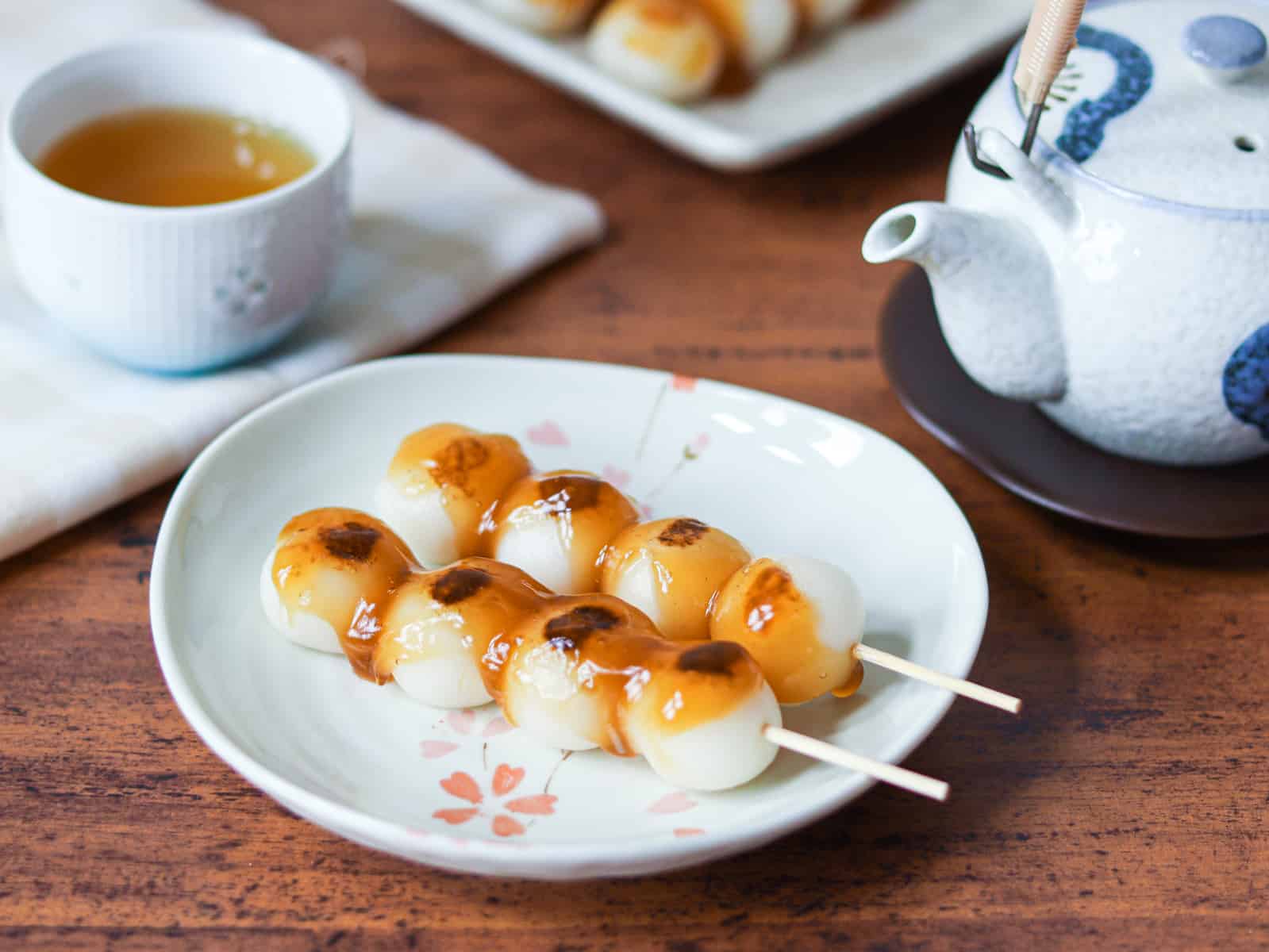
Ingredients
- 2 oz joshinko (上新粉)
- 2 oz shiratamako (白玉粉)
- 1 tsp sugar
- ⅖ cup water
For the sweet soy glaze
- ½ Tbsp potato starch or corn starch
- ½ Tbsp water (for the stach)
- 2 Tbsp sugar
- 1 Tbsp soy sauce
- 3 Tbsp water
Step-by-step instructions
🕒 Total 35 mins
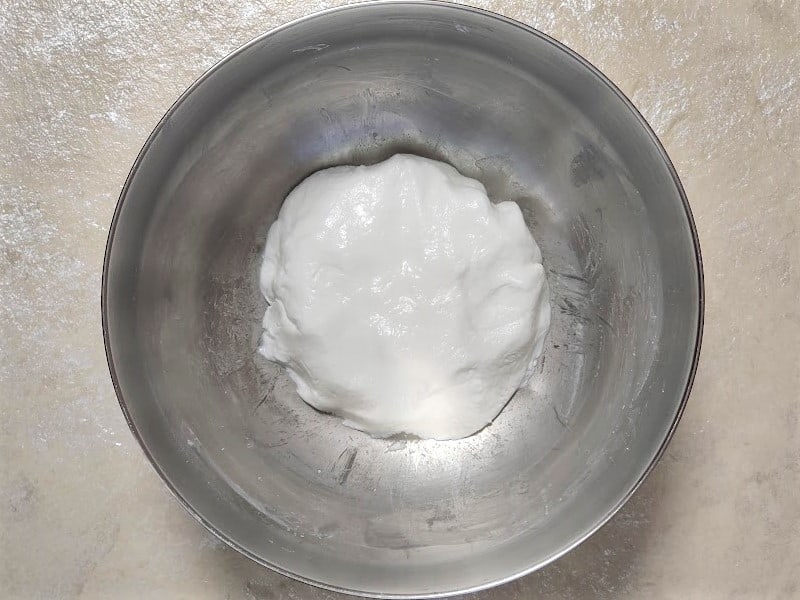
Step 1
Combine the joshinko, shiratamako, and sugar in a bowl and knead while gradually adding water. If the dough doesn't come together, add a small amount of water (about ½ Tbsp) and continue adjusting until the dough comes together properly.
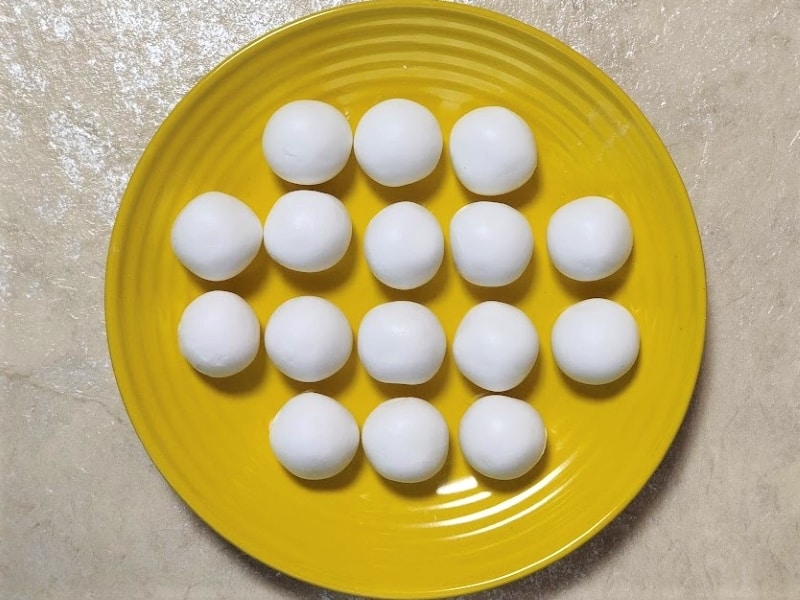
Step 2
Once the dough reaches a soft, earlobe-like consistency through kneading, shape it into dumplings that are around 0.46 oz (13g) each, rolling the dough between your palms.
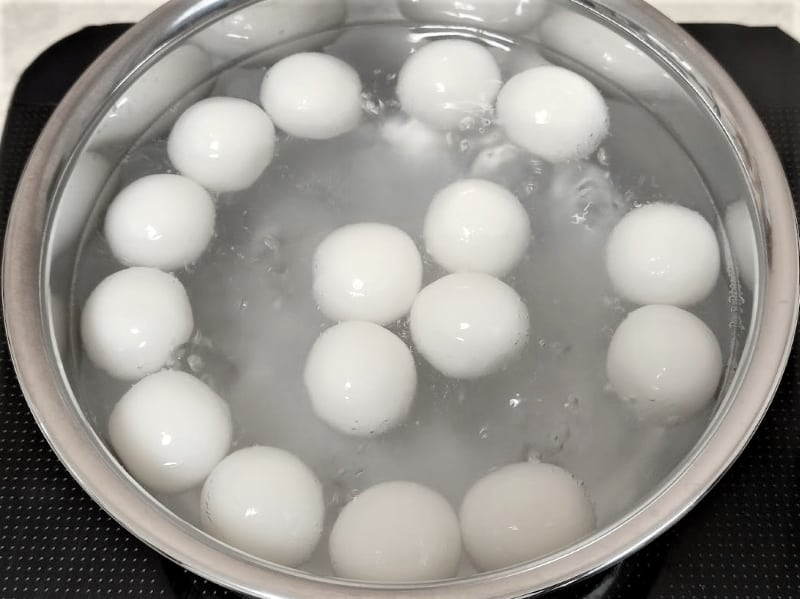
Step 3
Fill a pot with plenty of water and bring it to a boil. When it comes to a boil, add the dumpling dough to the pot and boil it over medium heat for about 4 minutes until it rises to the surface. After all the dumpling dough floats to the surface, continue boiling for a few more minutes.
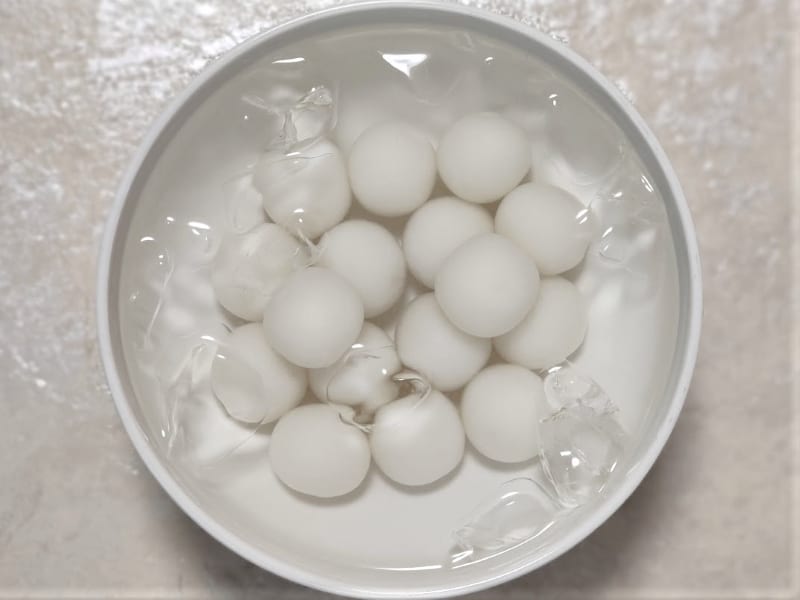
Step 4
Fill a bowl with ice water or cold water. Transfer the boiled dumplings to the bowl and let them cool for a few minutes.
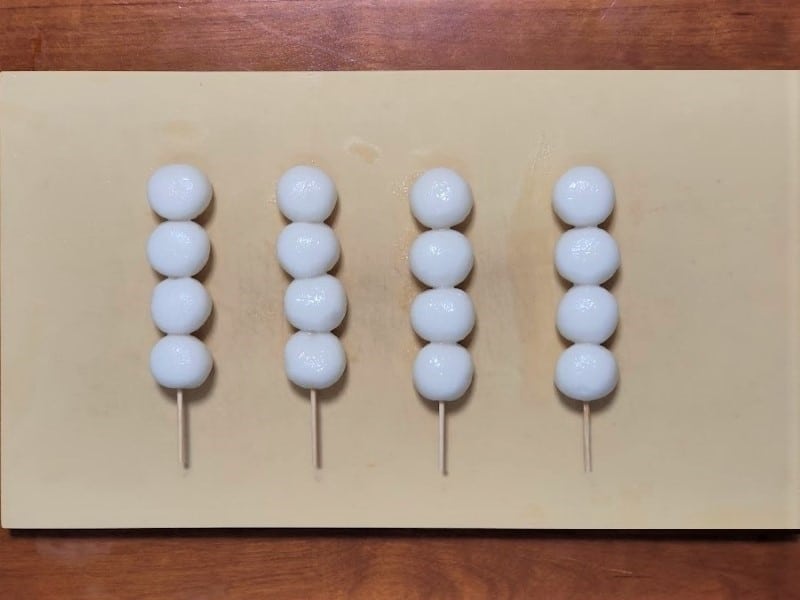
Step 5
Drain the dumplings in a sieve. Wait a few minutes for their surface to dry, and then skewer 4 dumplings per bamboo skewer.
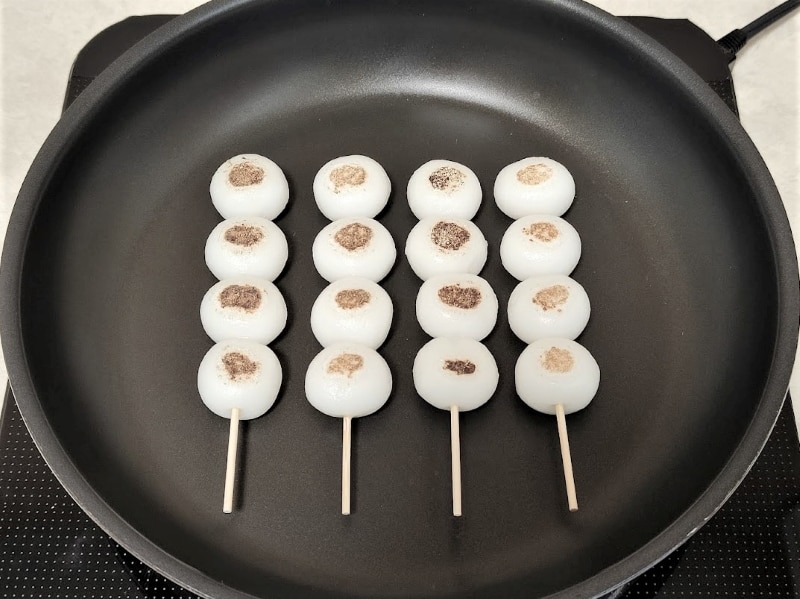
Step 6
Using a frying pan, kitchen torch, or direct flame, lightly brown the dumplings on both sides.
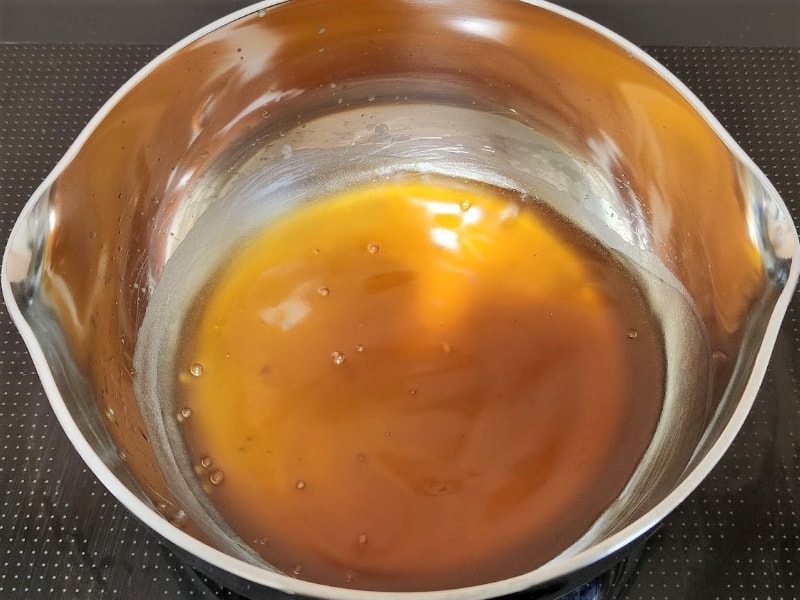
Step 7
Mix the starch with water until it dissolves. In a pot, combine sugar, soy sauce, and water, and bring it to a gentle boil over low heat. Gradually add the mixture of starch and water while stirring to thicken the glaze.
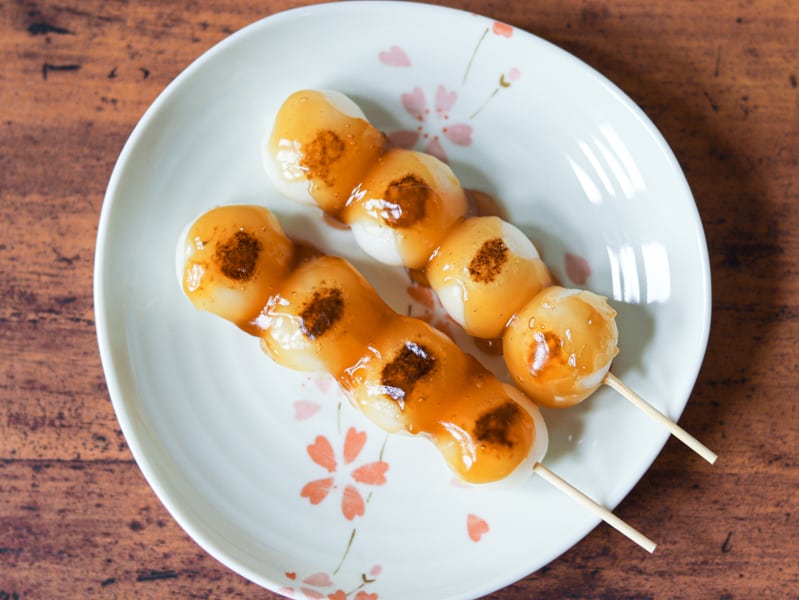
Step 8
Serve the skewered dumplings on plates and drizzle the sweet soy glaze over them.
To Store
You can store it in the refrigerator for up to 2 days. However, it is recommended to microwave it before eating, as it tends to harden when cooled.
Tips on how to make
- When preparing the dough, be careful not to add too much water. Excessive water can prevent the dough from holding together properly. Even if you think there is not enough water, be sure to add it in small amounts.
- Boil the dough slowly over medium heat. This will give the dumpling a soft texture.
Recipe Card
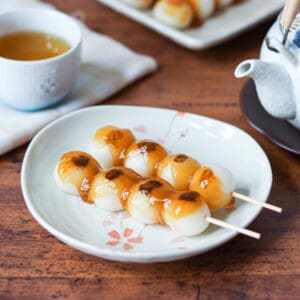
Mitarashi Dango (Rice Dumplings Coated with a Sweet Soy Glaze)
Ingredients
- 2 oz joshinko (上新粉)
- 2 oz shiratamako (白玉粉)
- 1 tsp sugar
- ⅖ cup water
For the sweet soy glaze
- ½ Tbsp potato starch or corn starch
- ½ Tbsp water (for the stach)
- 2 Tbsp sugar
- 1 Tbsp soy sauce
- 3 Tbsp water
Instructions
- Combine the joshinko, shiratamako, and sugar in a bowl and knead while gradually adding water. If the dough doesn't come together, add a small amount of water (about ½ Tbsp) and continue adjusting until the dough comes together properly.
- Once the dough reaches a soft, earlobe-like consistency through kneading, shape it into dumplings that are around 0.46 oz (13g) each, rolling the dough between your palms.
- Fill a pot with plenty of water and bring it to a boil. When it comes to a boil, add the dumpling dough to the pot and boil it over medium heat for about 4 minutes until it rises to the surface. After all the dumpling dough floats to the surface, continue boiling for a few more minutes.
- Fill a bowl with ice water or cold water. Transfer the boiled dumplings to the bowl and let them cool for a few minutes.
- Drain the dumplings in a sieve. Wait a few minutes for their surface to dry, and then skewer 4 dumplings per bamboo skewer.
- Using a frying pan, kitchen torch, or direct flame, lightly brown the dumplings on both sides.
- Mix the starch with water until it dissolves. In a pot, combine sugar, soy sauce, and water, and bring it to a gentle boil over low heat. Gradually add the mixture of starch and water while stirring to thicken the glaze.
- Serve the skewered dumplings on plates and drizzle the sweet soy glaze over them.
Notes
- You can store it in the refrigerator for up to 2 days. However, it is recommended to microwave it before eating, as it tends to harden when cooled.

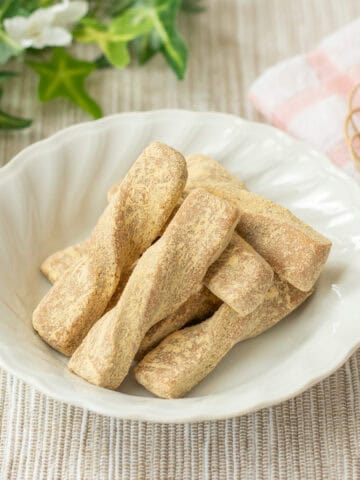
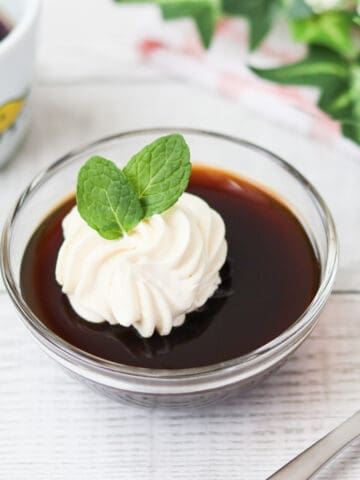
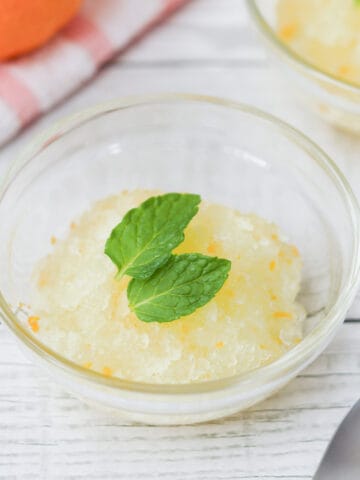

Leave a Reply